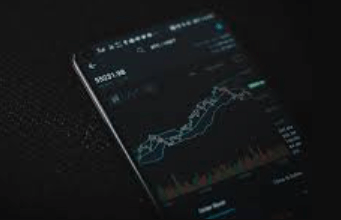Think Before You Click: The Truth About Overseas Car Deals

On the surface, importing a vehicle from overseas might feel like the smart, budget-friendly way to drive your dream car. Scrolling through online listings, it’s easy to be tempted by sleek sedans or rare performance vehicles priced far lower than what’s available locally. But behind every glossy image and “limited-time offer” is a process far more complex than many buyers anticipate.
That’s especially true when it comes to importing a car from Japan to Australia. While the vehicles themselves are often high quality, the journey from online purchase to street-ready car can be filled with regulatory hurdles, hidden fees, and frustrating delays.
Before clicking that “Buy Now” button, here’s what you really need to know.
The Online Illusion: Too Good to Be True?
One of the biggest red flags with overseas vehicle deals is how frictionless they’re made to appear. The platforms often promise “hassle-free delivery” or “compliance included,” but those claims rarely reflect the reality on the ground. In truth, the process involves multiple agencies, inspections, and logistical partners—and most of it falls on the buyer to manage.
Key issues include:
- Incomplete or poorly translated documentation
- Cars arriving with undisclosed damage or modifications
- Long shipping times due to port delays or missing paperwork
- Unexpected quarantine or cleaning requirements at arrival
If a deal looks unusually cheap, ask yourself what might be missing from the picture. Transparency, after all, is far more valuable than a low sticker price.
See also: Available Business Assistance: 192.168.31.228.8080
Legal and Compliance Hurdles
Australia has strict rules about what cars can be imported and driven legally. Before anything ships, the car must qualify under an approved import scheme—typically the Specialist and Enthusiast Vehicle Scheme (SEVS) or personal import rules. Without pre-approval, your vehicle may not be eligible for registration.
Even if the car qualifies, it will often need:
- Changes to meet Australian Design Rules (ADR)
- Speedometer conversions from km/h to mph
- Replacement of glass or lighting components
- Addition of child restraint anchor points
And these aren’t optional upgrades. Without passing compliance, your vehicle can’t be legally registered or insured. That “quick bargain” can easily turn into a months-long repair project.
The Risk of Unverified Sellers
Buying directly from a Japanese dealer or auction house requires more than just Google Translate. There are reputable exporters, but there are also plenty of third-party sellers who disappear once payment is made—or who cut corners to rush the process.
To reduce your risk:
- Always verify the seller’s credentials and online reviews
- Insist on recent photos and detailed inspection reports
- Ask for proof of vehicle deregistration from Japan
- Use escrow or protected payment systems whenever possible
If something feels off—or if a seller pressures you to move quickly—it’s a sign to walk away.
Hidden Costs That Catch Buyers Off Guard
The advertised vehicle price rarely tells the full story. A full import typically includes:
- Export and auction fees
- Shipping and marine insurance
- Customs duty and GST
- Port service fees
- Quarantine and cleaning charges
- Compliance inspection and modification costs
- State registration and roadworthy testing
It’s not unusual for buyers to spend thousands more than expected once all these add-ons are accounted for. The worst part? These costs usually appear one step at a time—making it easy to fall into the “sunk cost” trap and keep paying just to get the car on the road.
Smarter Ways to Buy Overseas
If you’re still set on importing, there are better strategies to protect your investment:
- Hire a licensed import agent: These professionals know the legal and logistical steps inside out. They’ll manage documentation, compliance, and even inspections on your behalf.
- Look for “turnkey” import services: Some companies offer packages where they handle everything—from sourcing the vehicle to registering it locally.
- Start with the paperwork: Always apply for your Vehicle Import Approval (VIA) before the car is shipped.
- Use reputable freight forwarders and customs brokers: This will help avoid delays and miscommunications that often occur when multiple agencies are involved.
A good rule of thumb? Treat the import process like a project—not a purchase. Planning every step in advance gives you the best chance of success.
Is Local Better After All?
Sometimes, the simplest way to avoid import headaches is to buy local. While Japanese imports do offer variety and price advantages, Australia already has a thriving market of imported vehicles that are pre-complied and road-ready. These cars often come with warranties, clear titles, and no unexpected delays.
Before you invest in a car you’ve never seen in person, consider checking local listings for the same make and model. Even if it costs a bit more upfront, it could save you months of waiting—and thousands in unexpected costs.
Importing a car can absolutely be worth it—when it’s done right. But what seems like a smooth, exciting deal can unravel fast if you’re not aware of the details. The best protection isn’t just a good price—it’s doing your homework, working with professionals, and refusing to be rushed.
So before you click on that next irresistible online deal, pause. Ask questions. Get clarity. Think beyond the price tag. That one extra moment of caution might just save you six months of stress.




